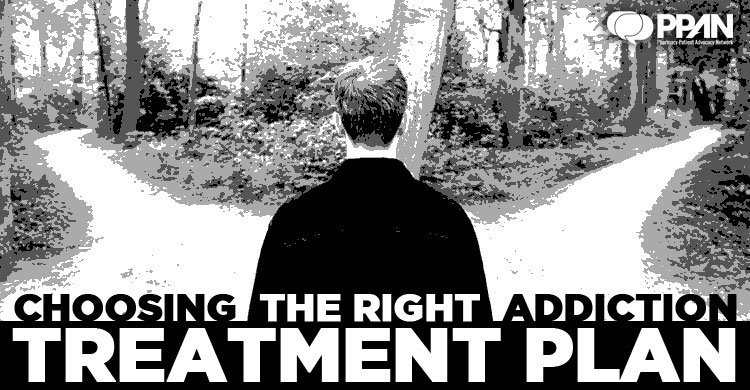Choosing the Right Addiction Treatment Plan
The issue of addiction and substance abuse is becoming a rising concern across the nation. This is not only due to the preponderance of stronger, more dangerous, and more heavily addictive drugs that are available, but is also due to socio-economic circumstances that has led to a society that is deeply helpless and hopeless feeling. The result is that turning to outside sources to fill this vital need for happiness is quite common.
The decision to go into an addiction treatment program can be self-motivated, come from the intervention of family and loved ones, or may even be legally mandated through the criminal justice system. All of these factors can impact the ability to choose the right treatment plan.
With independent and family motivation, candidates do have the ability to evaluate a larger selection of programs in order to determine the best fit. The major limitations that can be found in this approach are often fiscally generated. This can include the overall cost of a specific treatment program, as well as whether insurance providers will cover the stay.
Further, some inpatient programs that do cater to people with economic concerns may have a waiting list, or be unable to admit patients if they have already gone through a detox on their own. Space and resource limitations can often cause some well-meaning treatment programs to be forced to turn away patients, unless they test positive for substances at the time of admittance.
When addiction treatment is court mandated, further restrictions can also limit choices. Accepted treatment plans will have to be approved by the state and the criminal justice system, in accordance with outcome protocols that are expected by the courts. Beyond initial treatment, drug and alcohol education classes may also be required, and are not always supplied through the approved treatment center.
However, regardless of the limitations that may be placed on choice, it is still possible to find a proper treatment plan that is viable for circumstances. This can include in-patient and out-patient programs, as well as group and private therapy for substance abuse issues.
The Principles of Effective Treatment
For any addiction disorder, the object of behavioral change is a key principle within the plan. However, there is also the recognition that underlying factors have contributed to the situation. This also means that the use of therapy and even peer support for both adults and teens can aid in addressing root causes for addictive habits.
Although court mandated treatment is considered compulsory, and non-compliance can lead to trouble with the justice system, any patient does have the civil right to refuse treatment. For this reason, the choice of an outpatient program may involve greater effort on the part of the individual, but the ability to come and go can also foster greater compliance.
Conversely, in-patient programs trend to be more expensive, but they have the benefit of offering seclusion and distance from stressors that can trigger addictive behaviors. These 28 day programs are based on the concept that it takes close to four weeks for behavioral change to go from preconcept to reformed habit. However, in patient programs may be less helpful for people who are able to make healthy decisions when they are not faced with stressors. Although the transition back to the real world may be monitored through private and group therapy as well as out-patient and peer support, it can still be overwhelming to suddenly return to all the triggers for abuse at once.

However, the most ethical and beneficial treatment plans do function on several key principles.
- Validating and empowering the individual
- Acknowledging hurt and accepting the person as they are
- Inspiring the desire to make personal changes
- Education about the impacts and risks of substance abuse
- Breeding a sense of hope and joy that is not dependent on outside factors
While some treatment plans follow the Twelve Steps or utilize the handing over of outcomes to a higher power, spirituality that is non-denominational can also play a large part in treatment plans. This ties in to the principle of empowerment, as it asks individuals to acknowledge that which is good and joyful within themselves. This is also based on the behavioral concept that while addictive habits can be either learned or genetic, root causes for individuals include factors such as:
- Feeling flawed
- Feeling unlovable
- Self-loathing
- A sense of missing a part of the self
In this respect, both the inclusion of personal spirituality and the ability to validate and empower the other can also become a key to incorporating positive coping skills into life, instead of turning to substance abuse.
Medication for Addictions
The use of medications to treat addictions is highly limited, primarily because the goals of treatment are to foster independence, and not dependence on a substitute addiction. For this reason, medications may be used with people who have opiate addictions, simply to reduce the impact of withdrawal symptoms.
- Buprenorphine – this medication is used to either lessen or prevent withdrawal symptoms, and can be especially beneficial for people first entering treatment. One of the main reasons for early self-release from in-patient programs can be the severity of withdrawal. The use of this medication can provide sufficient relief to motivate a person to start the program
- Buprenorphine-naloxone – this is a follow up medication that continues to suppress withdrawal symptoms, but also slowly weans the patient from the opioid agonists. The hope with this type of transition is that eventually the patient will be able to completely be off of any narcotic or narcotic derivative.
- Methadone – this is still widely used in many public treatment programs and out-patient facilities. Patients do need to be enrolled in an active program in order to receive the medication, but it is still a controlled narcotic substance. Unlike buprenorphine and buprenorphine-naloxone, methadone is not an agonist but simple reduces the pain that is felt from withdrawals. For this reason, methadone is not always used, since it can lead to its own from of abuse and addiction.





